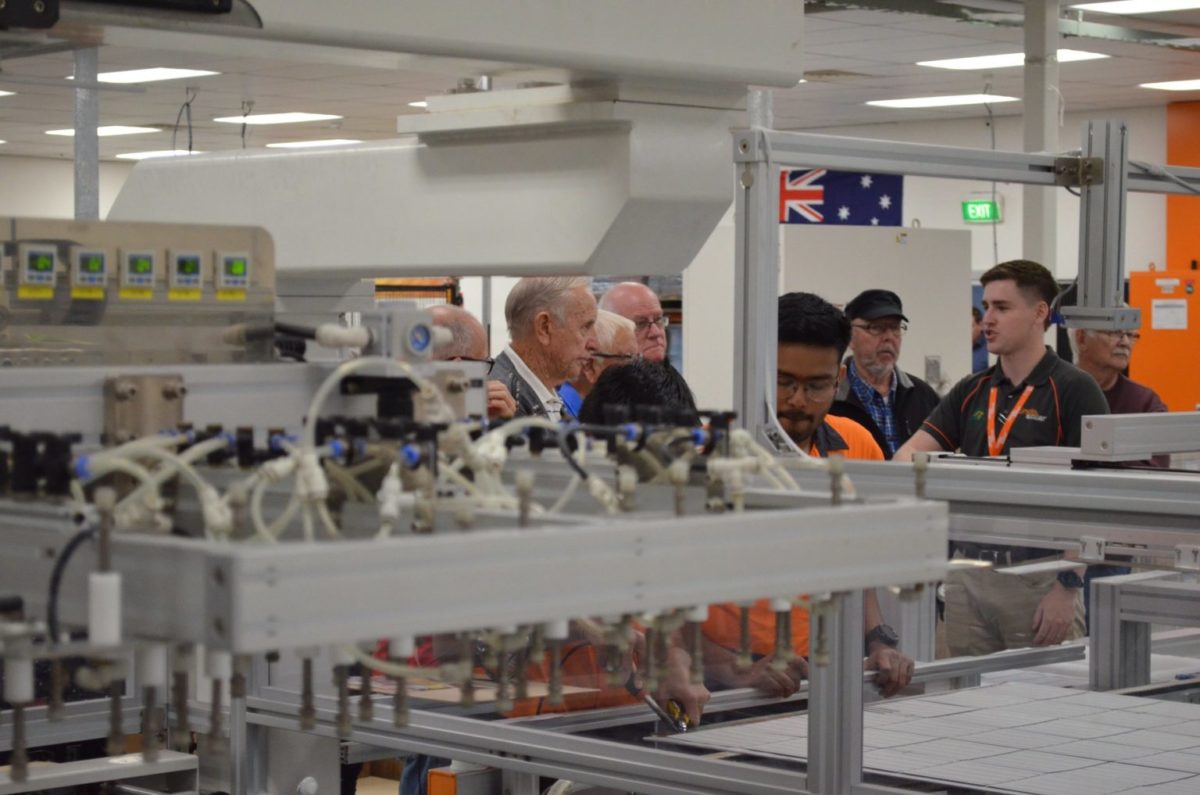Australia’s only solar PV module manufacturer, Tindo Solar, has secured AUD 1 million ($755,300) in federal government funding, which will help it to transition to new M10 cell technology and boost production capacity with a new manufacturing facility in Adelaide nearing completion.
Tindo Solar CEO Shayne Jaenisch said on Monday the AUD 1 million grant, announced as part of a AUD 55 million package awarded under round two of the Manufacturing Modernisation Fund (MMF), would allow the company to compete on equal footing with the world’s biggest module manufacturers.
“We’re looking forward to being able to take the next step,” Jaenisch told pv magazine. “It allows us to compete at the front end of technology. Once we bring the new line into production in January I think we’ll be able to compete with the top 10% of manufacturers globally in performance. We’ve always had the quality. Now we’ve got to that point where we can compete head on with some of the biggest manufacturers around the world.”
The cash injection marks the first funds the company has received from any level of government. Tindo Solar has been manufacturing solar PV modules at its Mawson Lakes facility in Adelaide’s northern suburbs for more than a decade. But the company recently announced expansion plans to allow it to satisfy growing demand for its Australian-made modules.
The new plant will boost the company’s production capacity to 150 MW per annum. It will see Tindo Solar transition to the latest M10 cell technology. Jaenisch said a 144-cell 550 W module will be among the first modules to roll off the new line.
Tindo Solar is one of 86 businesses across Australia to share in the latest round of MMF grants. Sun Cable, the Singaporean consortium behind the AUD 26 billion Australia-ASEAN Power Link (AAPL), also recently secured a AUD 1 million grant under round two of the MMF to progress its plans to develop a proposed solar array manufacturing assembly facility in Darwin.
Earlier this year, Sun Cable announced plans to construct a facility to manufacture the prefabricated, pre-wired Maverick solar systems, designed by Sydney-based manufacturer 5B. The system has been selected as the module of choice for the AAPL project – a 14 GW solar farm and approximately 33 GWh battery energy storage system to be constructed in the Northern Territory’s Barkly Region.
Sun Cable said the first stage of the proposed manufacturing facility will pilot a semi-automated production line, which will provide opportunities to supply other solar farms across northern Australia with the Maverick solar array systems. Phase two of the development will expand the facility to manufacture systems for the AAPL project.
Sydney-based E3Sixty was also included in the list of MMF grant recipients, securing $469,950 to help finance a AUD 1.9 million e-waste recycling facility in the city’s western suburbs. E3Sixty Solar, which incorporates PV Industries, recently secured a site in Auburn, where it has already commenced a solar module recycling operation.
Minister for Industry, Science and Technology Christian Porter said the MMF, part of the government’s AUD 1.5 billion Modern Manufacturing Strategy, is designed to help business to modernise their manufacturing processes, improve productivity and target new export opportunities. Businesses are required to match government funding on a three-to-one basis, with government grants covering up to 25% of eligible project expenditure.
The minimum grant amount is AUD 100,000 and the maximum grant amount is AUD 1 million. Projects must be completed within two years.
“Australia’s manufacturing sector is vitally important to our economy, directly employing more than 900,000 Australian workers and contributing almost $120 billion to our export earnings last year,” Porter said. “Investing in the latest manufacturing technology and equipment helps them to remain internationally competitive by improving their productivity and increasing their capacity to target new export markets for their products. Just as importantly, these investments also help to grow well-paid and highly skilled jobs in the modern manufacturing sector for Australian workers. We know that for every manufacturing job we create, at least three additional jobs are created in other areas of our economy.”
This content is protected by copyright and may not be reused. If you want to cooperate with us and would like to reuse some of our content, please contact: editors@pv-magazine.com.




By submitting this form you agree to pv magazine using your data for the purposes of publishing your comment.
Your personal data will only be disclosed or otherwise transmitted to third parties for the purposes of spam filtering or if this is necessary for technical maintenance of the website. Any other transfer to third parties will not take place unless this is justified on the basis of applicable data protection regulations or if pv magazine is legally obliged to do so.
You may revoke this consent at any time with effect for the future, in which case your personal data will be deleted immediately. Otherwise, your data will be deleted if pv magazine has processed your request or the purpose of data storage is fulfilled.
Further information on data privacy can be found in our Data Protection Policy.